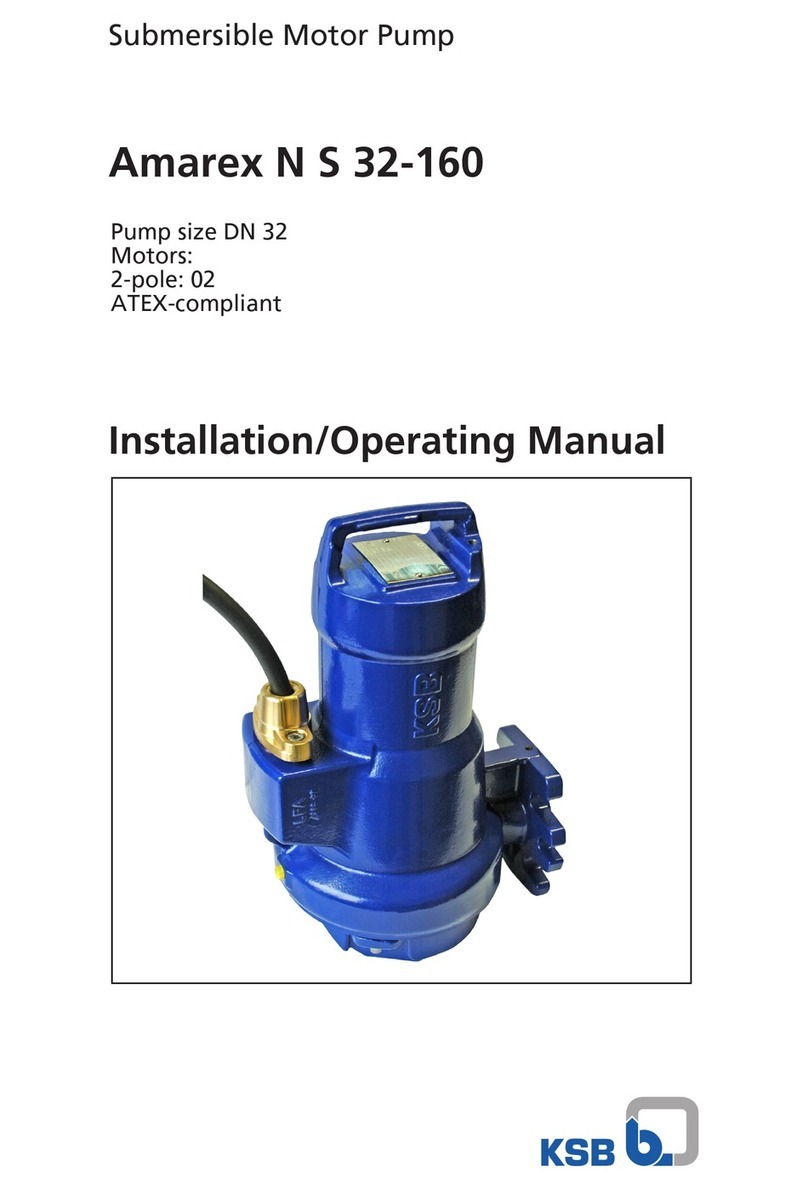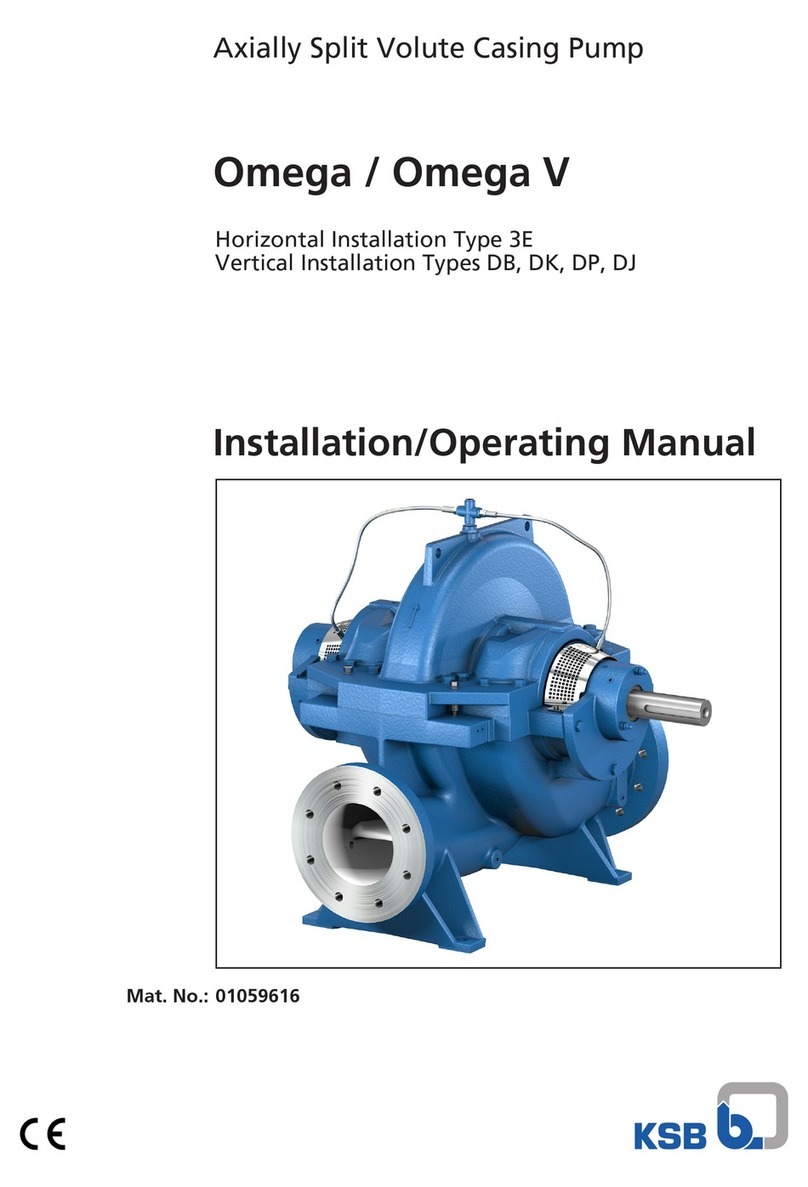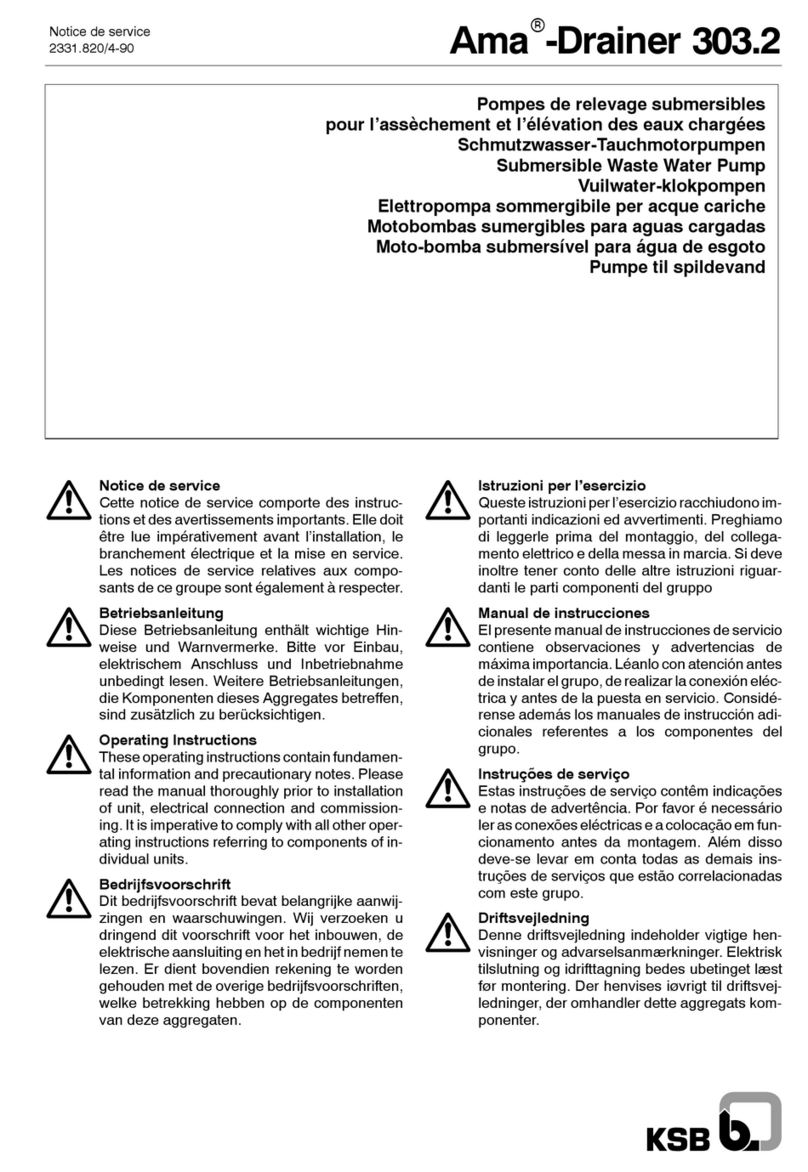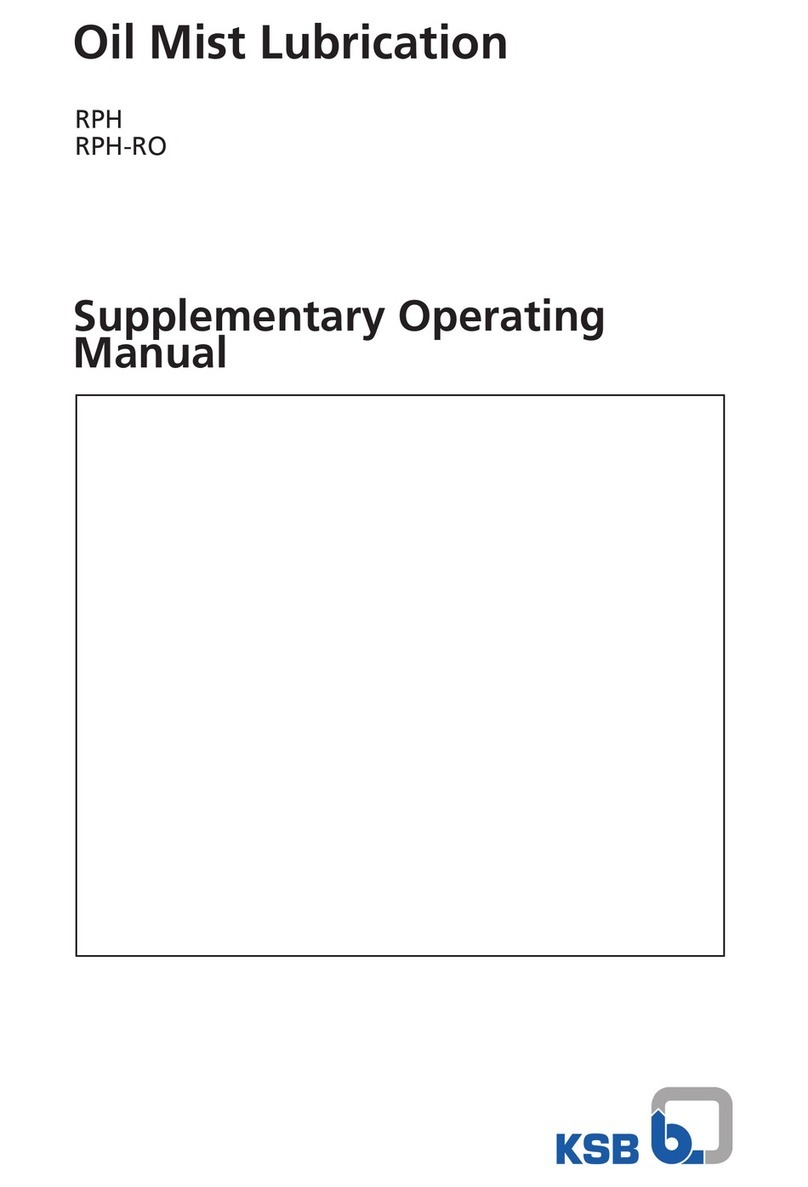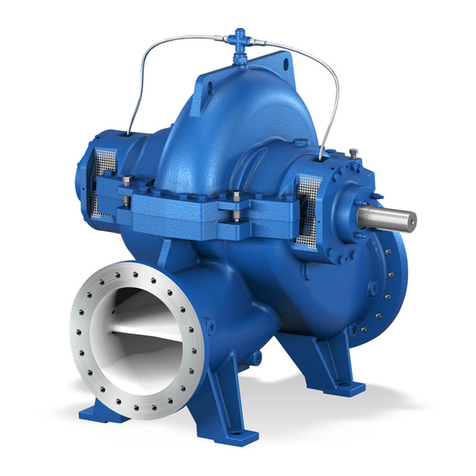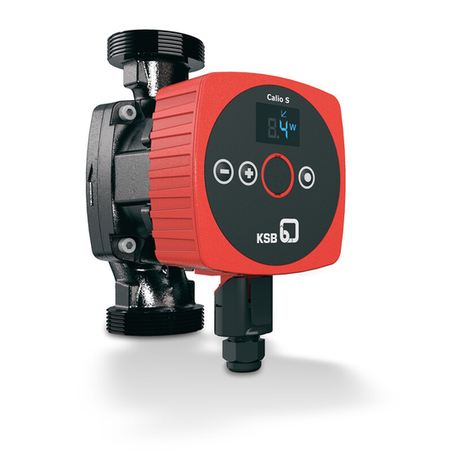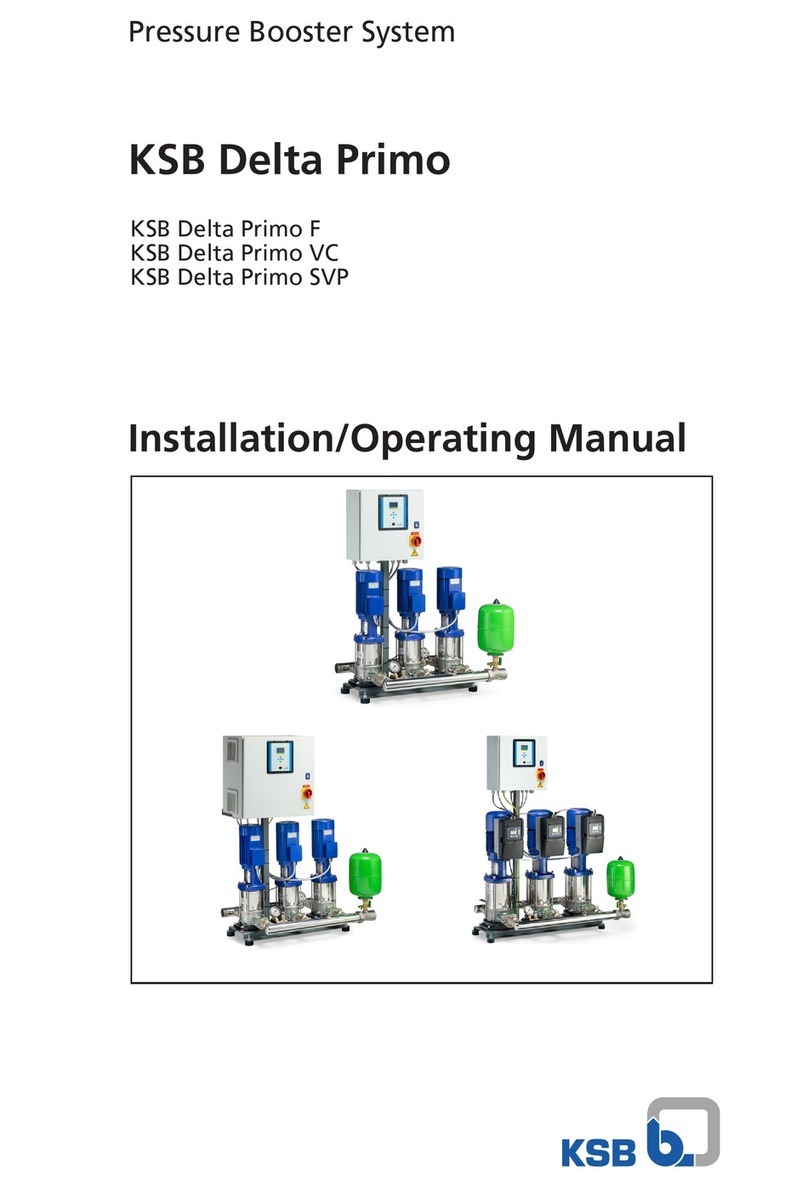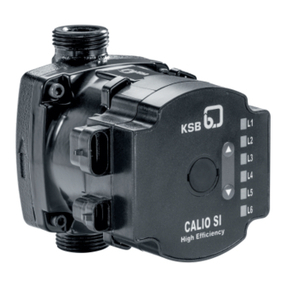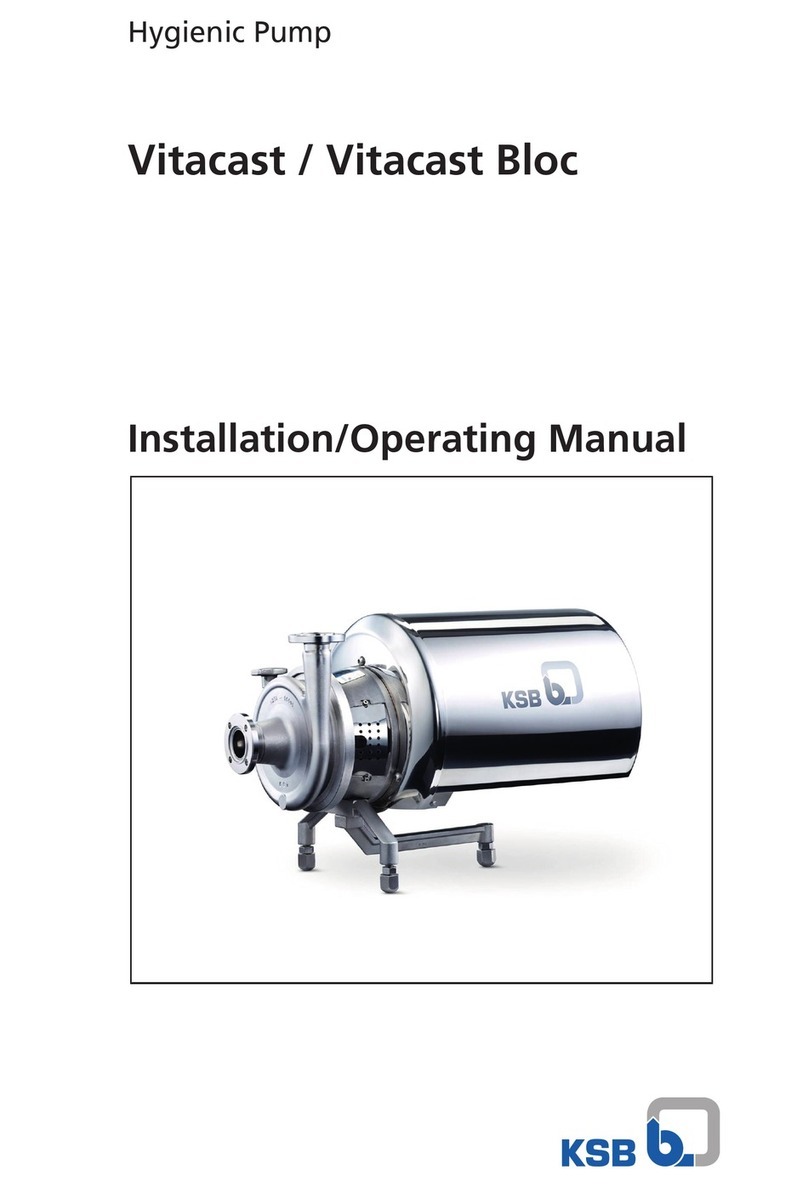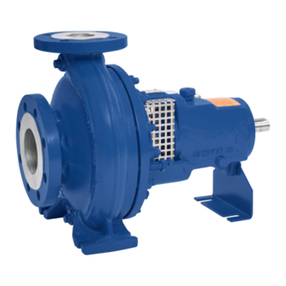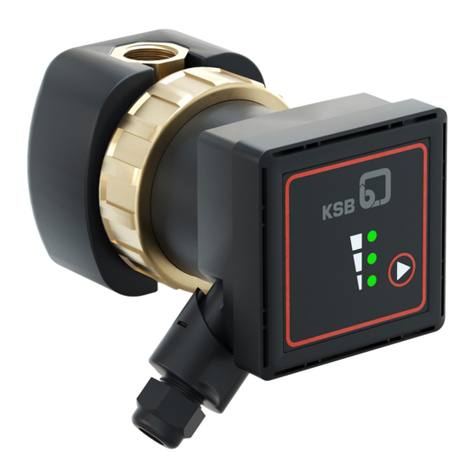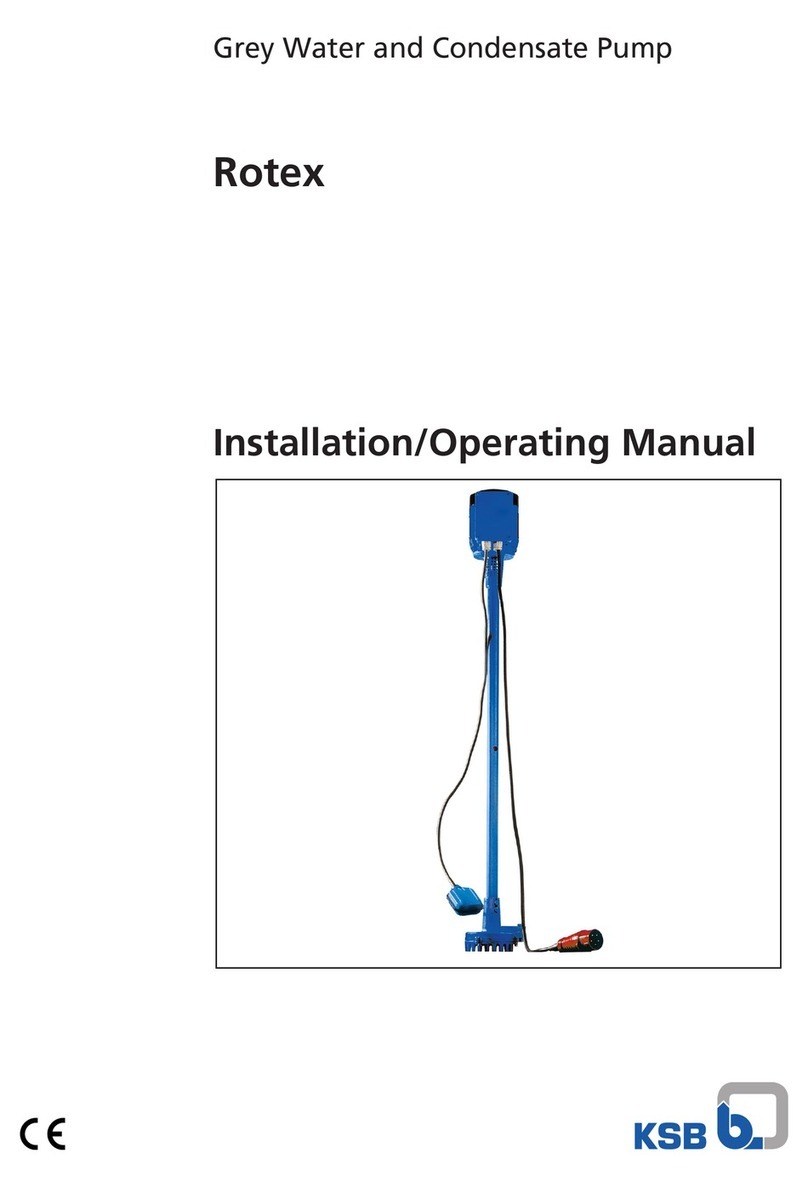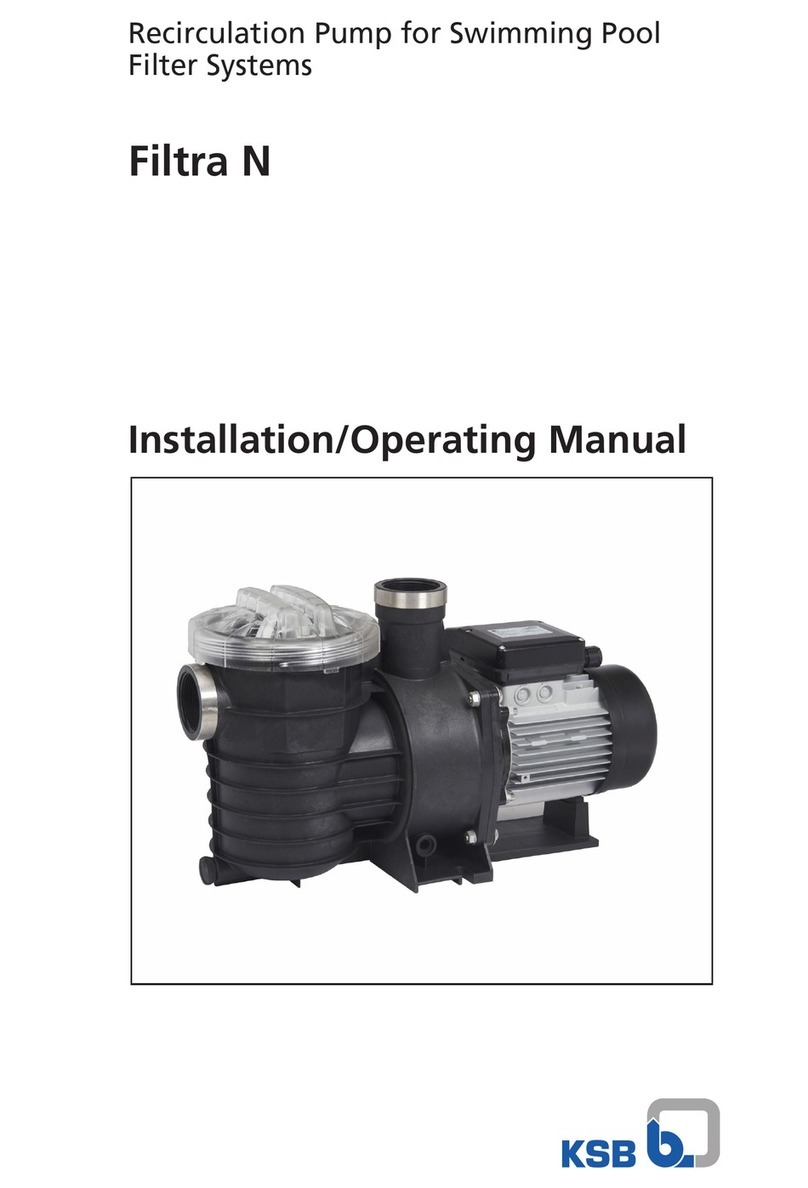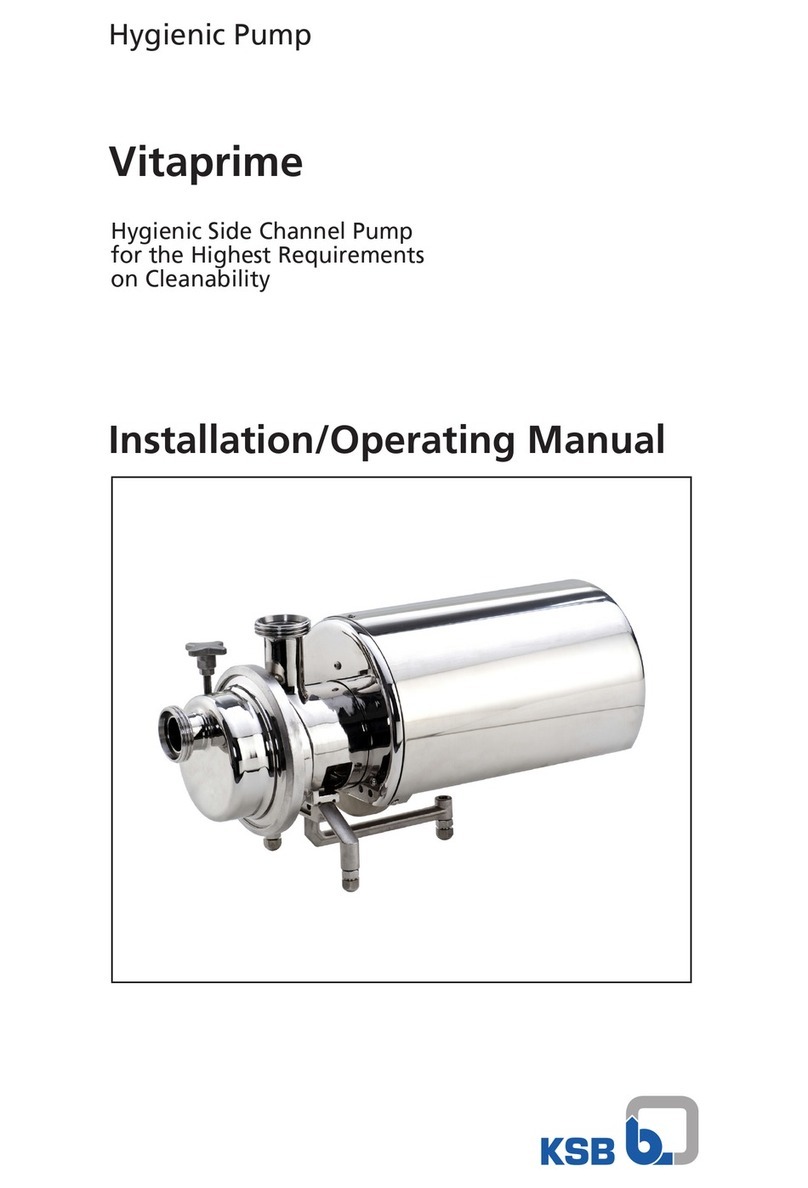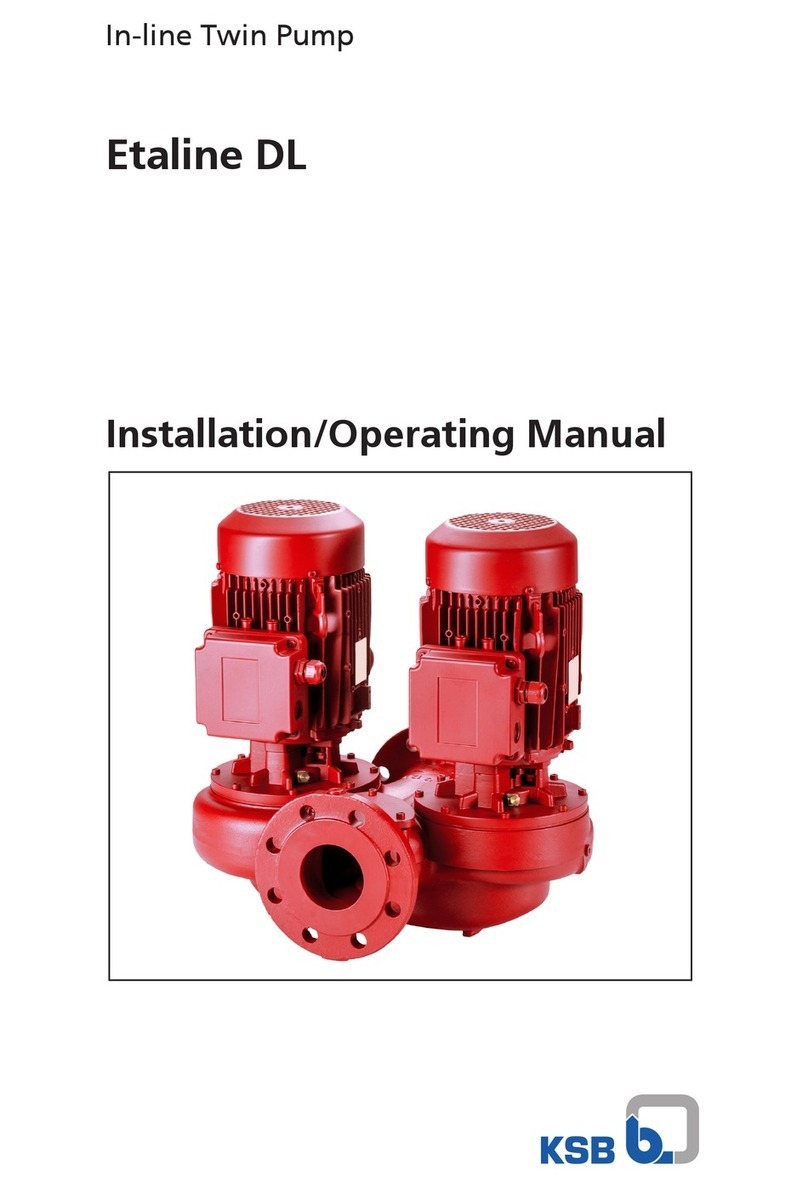
IFV
5
5 Installation
The electropump is dispatched totally mounted and prepared
for installation and operation (except for the few cases of the
motor being dispatched disassembled, as is the case of large,
heavy motors).
The design of the pipe systems, anchorings
and other installation areas corresponds to
other parties. KSB ITUR only offers details and comments as
a help, but does not assume any responsibility with regards to
the design, assembly and operation of any installation. We
recommend that customers check with a specialist in the
design of castings, pipes, wells, etc in order to interpret and
supplement the information given by KSB ITUR and to ensure
correct operation.
5.1 Check before assembly
Before positioning, check that the assembly base is in line with
the dimensional plan of the equipment.
The upper surface of the base must be horizontal and flat.
If the anchor pins are to be placed in existing holes, place the
anchor pins in their orifices suspended from the pump.
Do not connect the suction and impulsion nozzles until the
equipment is completely installed on its base.
5.2 Group positioning
5.2.1 Vertical groups
Levelling
Use a spirit level to level the equipment. Use wedges to alter
the height at different points. The maximum deviation
permitted is 0.2 mm/m.
The separation between the two coupling halves must be
maintained.
Pump - motor alignment
The equipment is aligned at factory, and this alignment will
never be lost. In case of dismantling of the motor and when
mounting again the motor following instructions must be
followed:
Check that the flange support surface of the motor support
and of the motor itself are perfectly clean and smooth.
- Check the correct separation between the two halves of
the coupling.
- Check that the alignment between both shafts is correct
by turning the equipment by hand.
5.3 Pipe joint
In no case can the pump be used as a fixed point for the
pipes.
The pipe system must at no time exercise force (due
to connection, thermal variation, etc.) in the pump.
The short pipes must be of at least the diameter of the pump
connections. The diameter of long pipes is, in some cases,
determined by economic criteria.
Transition pieces at larger diameters must have an extension
angle of around 8°, in order to prevent pressure drops.
The thermal expansions of the pipes must be offset with
suitable measurements, in order not to exceed the maximum
strains permitted on the pump.
The diameters of the pipes, valves and accessories must be
calculated in line with the load losses envisaged in the
installation, so that the fluid impulsion speeds in the pipes will
be from 2 to 3 m/s
Exceeding the admitted strains of the pipes may lead
to leaks in the pump and to the fluid escaping.
Hazard of death with hot liquids!
The suction and impulsion flange covers of the pump must be
removed before connecting the pipes.
Before starting up a new installation, it is necessary to
thoroughly clean the tanks, pipes and accessories by brushing
and blowing. Welding material, scales and other impurities are
often cast off some time after.
In order to prevent the rotation of the pumps
in inverse direction (danger of the impeller
breaking out), a retention valve must be placed in the
impulsion pipe.
Wet well. Suction conditions
It is not enough to simply submerge the pump in the well to
make it is primed. We need to pay attention to the suction of
the pump, since in this case good suction will depend more on
the environment surrounding the pump (physical conditions of
the well or sump) than on the pump itself.
As a general rule we can make some observations:
- The minimum liquid level in the well must be at the
distance indicated in the table in annex 9.2, save for
particular pump plans or datasheets showing other
greater or lower values for minimum submergence.
- The input of liquid to the well must be carried out gently,
without any fluctuation or turbulence which may harm the
pump suction, always aiming to achieve the most stable
flow possible.
- If several pumps are working in parallel in a single well,
they should be at a suitable distance from each other, or
precautions should be taken to ensure there is no
disturbance which may affect the suction conditions of
the pump.
The maximum liquid level must always be below the
base plate in order for it not to overflow.
5.3.1 Auxiliary connections
The equipment is normally delivered mounted and ready for
immediate operation, with only the hydraulic and exterior
electrical connections being necessary.
In the case of dirty or abrasive pumping liquids in which it is
necessary to connect the auxiliary refrigeration connections or
lubrication of the equipment, follow the instructions detailed in
7.2.2 or in annexes to this manual.
Auxiliary pipes are designed exclusively to
support internal strains due to the pressure of
the circulating fluid, to which end it is forbidden to subject
them to additional exterior strains (e.g. leaning on them, etc).
Note
Note
Note

